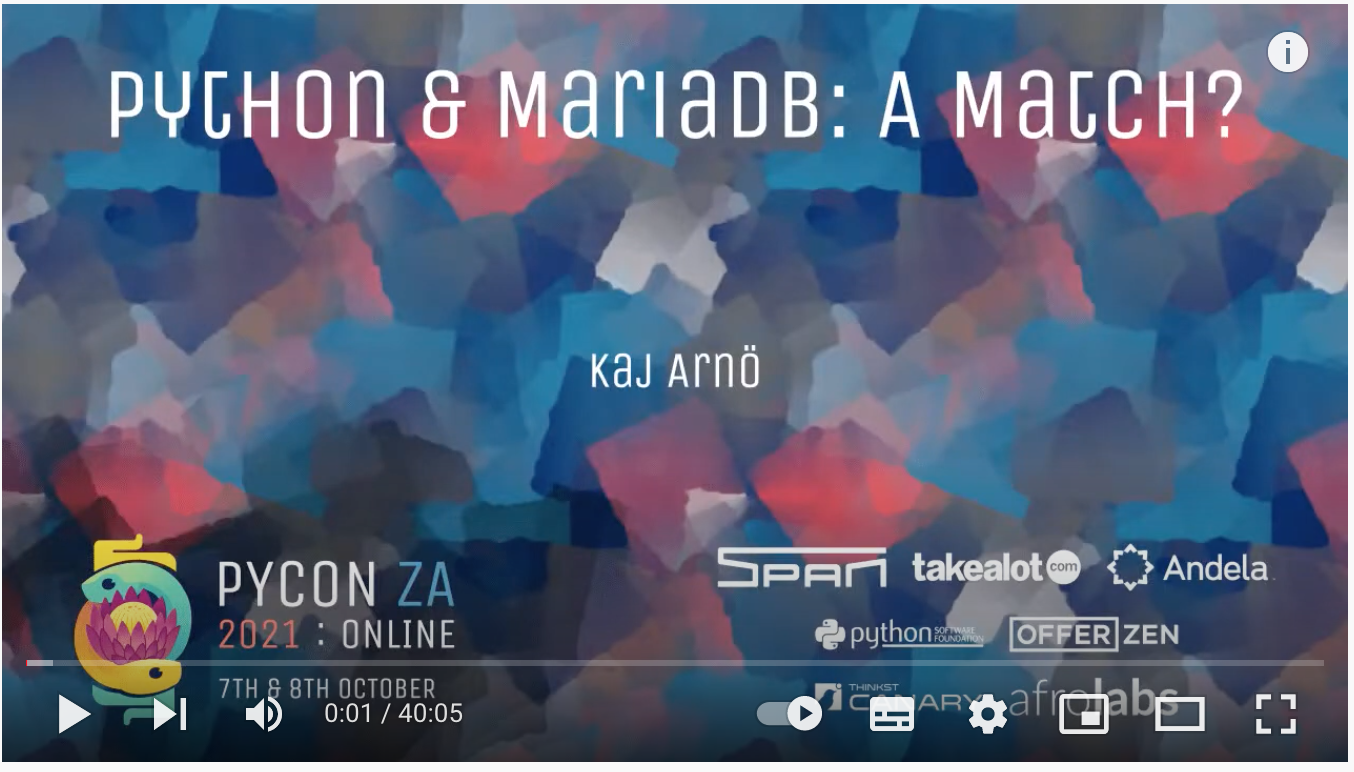Category Archives: Development
At Vettabase we support various databases,and in particular we are MariaDB enthusiasts. Even more, we’re proud to be MariaDB Foundation Technology Partners. So I’m happy to write this small wrap-up about the MariaDB Foundation public activities in 2021! Just a disclaimer before starting: this is not an official retrospective, it’s a subjective, opinionated one. My opinions represent myself alone. So here is my favourite 2021 news in the MariaDB world…
MariaDB 10.6 went Generally Available in November (I wrote a summary on Vettabase website). A couple of unmaintained storage engines were removed, as well as 23 InnoDB variables.
…
As an Oracle compatibility syntax extension, the IN, OUT, and INOUT / IN OUT quantifiers of stored function parameters was requested in MDEV-10654. It was noted that Postgres and DB2 also support this syntax. A few years later thanks to our community contributor Manohar KB of Rakuten Securities Japan, this functionality was created. Alexander Barkov from the MariaDB Corporation provided reviews and extended this PL/SQL syntax to be available in the non SQL_MODE=ORACLE mode of SQL/PSM.
Having OUT parameters on functions enables the nesting of functions will multiple return values where previously there was only the single return value possible.
…
Continue reading “10.8 preview feature: IN, OUT, INOUT, IN OUT parameters in CREATE FUNCTION”
MariaDB does have bugs. Users see them sometimes. Sometimes developers look for a long time at bug reports and code and still cannot see how the situation occurred. Developers during their analysis ask questions like:
- I wonder if this was already fixed in {not released version}? But how can I ask a user to test that?
- Can I get the user to get good stack trace that would help understand this better? But users sometimes find this hard.
- What exact hardware and kernel configuration is this bug occurring on? And how would I reproduce this?
…
During the development of MariaDB, a lot of things are tested. However the most important workload to be tested is the one we don’t have access to, and that is your workload.
As many of you run your own CI, we’d like you to invite you to join the testing of MariaDB. quay.io/mariadb-foundation/mariadb-devel is a container repository using the latest from our main stable branches. By the time any code gets into these branches it has been reviewed and passed our tests. The developers of the change consider it finished, so this is the perfect time to take this code and test it on your workload.
…
Continue reading “New Service – quay.io/mariadb-foundation/mariadb-devel”
Quarterly release structure delivers new features to the community faster
REDWOOD CITY, Calif. and HELSINKI – December 9, 2021 – MariaDB Corporation Ab and MariaDB Foundation today announced a new release model for MariaDB Server, by MariaDB Corporation referred to as MariaDB Community Server, centered on the goal of delivering new features and innovation faster to the millions of MariaDB users around the world. Under the new model, new server release series, such as MariaDB 10.7 or 10.8, occur once a quarter, rather than once a year, bringing more opportunities for new features and contributions to be delivered to the MariaDB user base.
…
Continue reading “MariaDB Announces New Innovation Release Model”
CONNECT is a storage engine (SE) plugin used to access external, local or remote data. In this blog we are going to show how to install the CONNECT storage engine in a Docker container and how to share JSON data between containers.
Enabling CONNECT SE plugin in Docker
CONNECT SE needs to be installed within the container in order to use it. To see how to do that please check Installing plugins in the MariaDB Docker Library Container.
Create JSON data on remote server
The most important feature of CONNECT SE to MariaDB is the flexibility to create tables from various data sources, like the same database and other DMBS’s tables or files with different formats.
…
Continue reading “Using CONNECT SE to access remote JSON data with demo examples in Docker”
Python is my personal favourite programming language, at least this century. So when the opportunity presented itself to have a talk at PyConZA, off I went. Not to South Africa in person, for a 40 minute talk, though.
Technical challenges on Streamyard
It was a live presentation, streamed on Streamyard with chat on Discord. I complained of the bad connectivity I had in central Munich, much to the amusement of the South African audience, which evidently thought they were role models and market leaders when it comes to bad Internet.
…
MariaDB plugins are software components that may be added to the core software without the need to rebuild the MariaDB Server. Plugins can be storage engines, additional security requirements, special log information about the server and others. MariaDB has a large number of built-in plugins which are permanently installed (listed in SHOW PLUGINS query). Plugins can be loaded at start-up, during initialization, or loaded dynamically when the server is running.
In this blog we are going to see how to list available plugins in the MariaDB container as well as the methods of installing plugins in a container.
…
Continue reading “Installing plugins in the MariaDB Docker Library Container”
